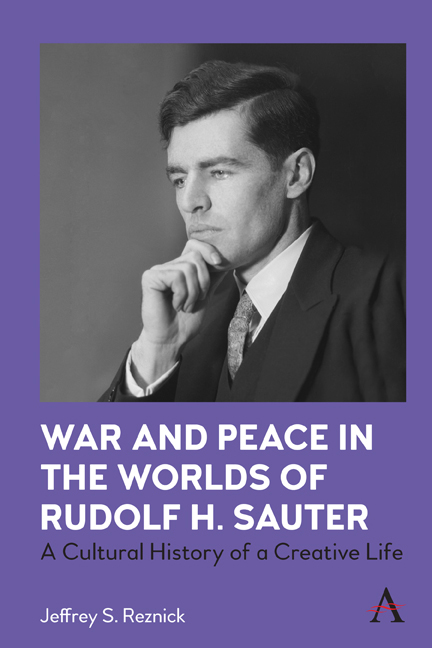Book contents
- Frontmatter
- Contents
- List of tables and figures
- Acknowledgments
- Introduction: Reconstructing a Creative Life
- Chapter 1 Beginnings, 1890–1914
- Chapter 2 Internment, 1914–19
- Chapter 3 Recovery, 1919– 24
- Chapter 4 Artistry I, 1924–39
- Chapter 5 Artistry II, 1939–50
- Chapter 6 Reflections, 1950–77
- Conclusion: Legacy
- Epilogue: In His Own Words
- Selected Bibliography
- Index
Chapter 2 - Internment, 1914–19
Published online by Cambridge University Press: 13 May 2022
- Frontmatter
- Contents
- List of tables and figures
- Acknowledgments
- Introduction: Reconstructing a Creative Life
- Chapter 1 Beginnings, 1890–1914
- Chapter 2 Internment, 1914–19
- Chapter 3 Recovery, 1919– 24
- Chapter 4 Artistry I, 1924–39
- Chapter 5 Artistry II, 1939–50
- Chapter 6 Reflections, 1950–77
- Conclusion: Legacy
- Epilogue: In His Own Words
- Selected Bibliography
- Index
Summary
On August 5, 1914, one day after England declared war on Germany, Parliament passed the Aliens Restriction Act, requiring foreign nationals, particularly Germans, to register with the police and, when necessary, be interned or deported. As Georg described the situation to his friend Ethel Fiedler, “the calamity which has come over us is so terrible and paralysing, we [are] dumb.” Despite this climate of widespread anti-German sentiment and fear of spies, Georg and Lilian sought to live as usual. He continued to paint. She continued to write, publish her poetry and expand her involvement in suffragist circles. Rudolf continued the studies he had begun in Munich a few years earlier. He also spent time in Manaton at Wingstone, his uncle’s farmhouse, riding horses and walking in the countryside. The normalcy all three Sauters attempted to achieve belied the fact that “the shadow of war was creeping closer to them.”
Indeed, the rule of wartime law eventually caught up with them when authorities interned Georg on December 7, 1915. The action appalled his family and friends, and especially his brother-in-law. Galworthy soon petitioned strongly for Georg’s release, sending a letter to the Home Secretary Herbert Samuel and visiting the Home Office where he argued personally for Georg’s case. Ultimately, Samuel did nothing except refer the case back to the tribunal dealing with internees. In May 1916, with a petition in hand signed by himself and many other well-known writers and artists, Galsworthy appealed in person to an Advisory Committee in Westminster Hall, but without success. The news about Georg’s likely fate, as well as the near-certain fate of Rudolf, made Lilian all the more frail and full of worry. The artist Leon de Smet captured her poor physical and mental state in his contemporary portrait of her.
Lilian continued to worry even as the police permission she and Rudolf received, thanks to her brother, allowed them to travel to Manaton to avoid the anti-German feeling in London where they had been restricted to a fivemile radius of their home in Holland Park. Anxiety and fear continued to mark their lives through the winter of 1916–17, when, in January, Georg was repatriated to Germany, “able to take nothing with him but his trunk which was robbed on the way & leaving practically all his work locked up in hostile countries.”
- Type
- Chapter
- Information
- War and Peace in the Worlds of Rudolf H. SauterA Cultural History of a Creative Life, pp. 41 - 72Publisher: Anthem PressPrint publication year: 2022



